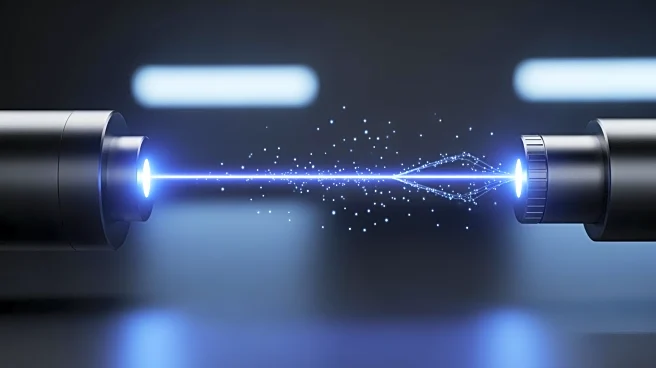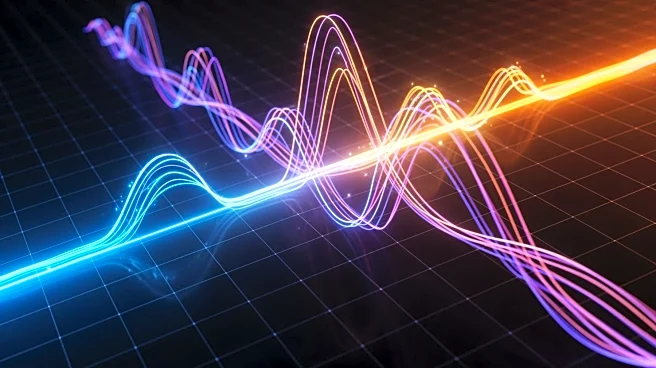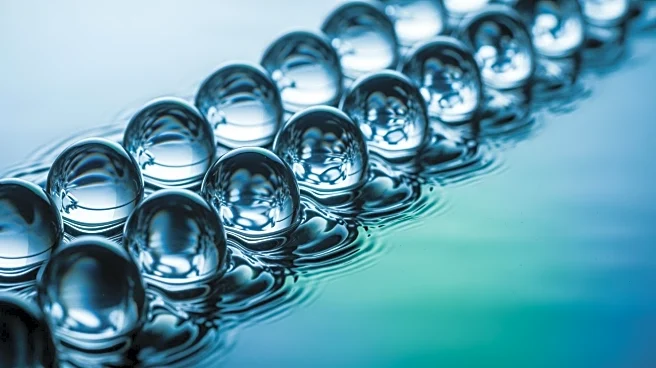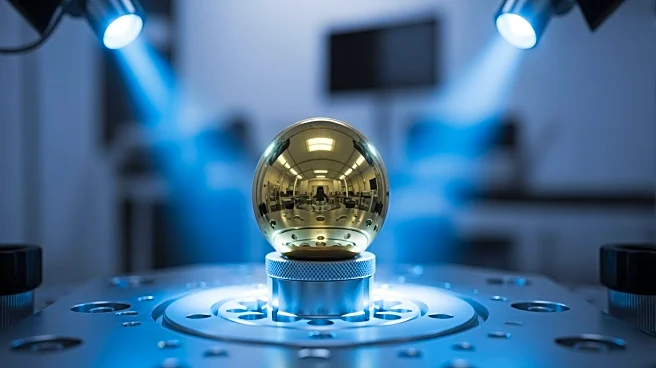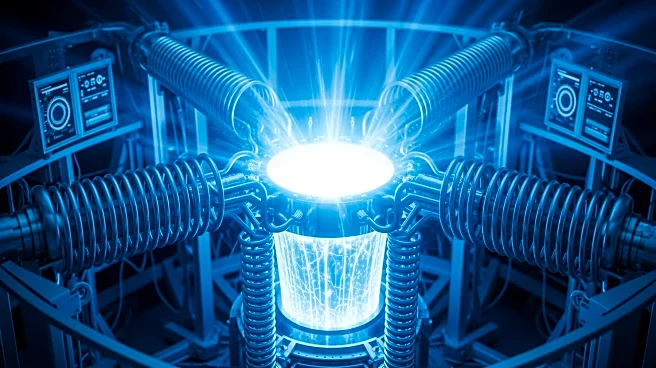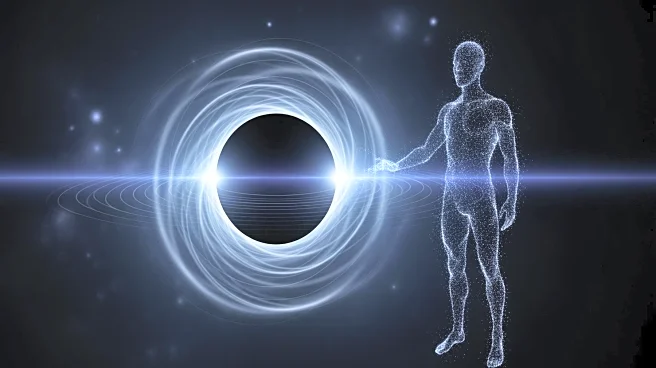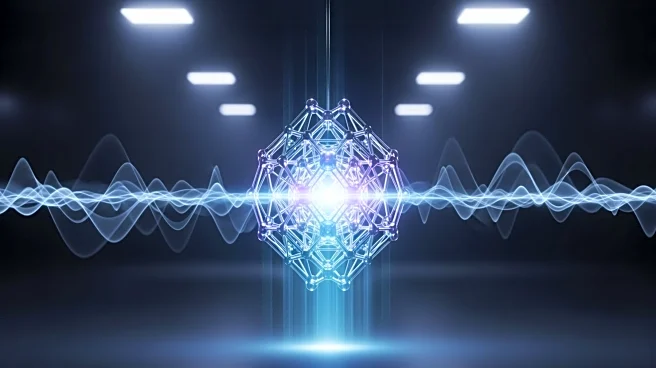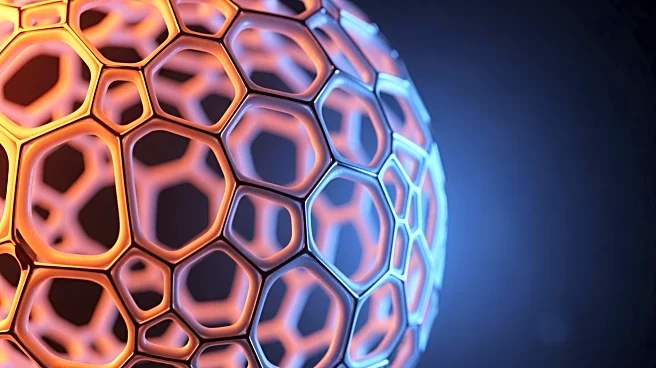What's Happening?
Recent developments in UV-C photonics have led to the generation and detection of femtosecond laser pulses, utilizing cascaded second harmonic generation (SHG) in nonlinear crystals. This process involves
converting a 1024 nm laser into UV-C pulses at 256 nm using bismuth triborate (BiBO) and beta-barium borate (BBO) crystals. The setup achieves a conversion efficiency of 20%, marking the highest reported efficiency for these laser parameters. The UV-C sensors, based on GaSe and Ga2O3, demonstrate strong light-matter interaction, making them suitable for monolithic integration with photonic circuits.
Why It's Important?
The ability to generate and detect femtosecond UV-C laser pulses with high efficiency and compact systems is crucial for advancing semiconductor processing and photonic technologies. These developments could lead to more precise and scalable manufacturing processes, enhancing the capabilities of photonic integrated circuits. The research highlights the potential for commercialization, offering promising routes for the development of self-powered devices with spectral tunability and imaging capabilities.
What's Next?
Future research may focus on optimizing the materials and processes involved in UV-C photonics to further improve efficiency and integration capabilities. The scalability of these technologies suggests potential for widespread adoption in various industries, including telecommunications and semiconductor manufacturing. Continued exploration of GaSe and Ga2O3-based devices could lead to new applications in sensing and imaging.
